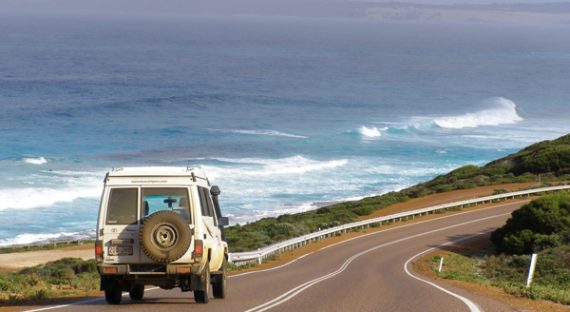
Not Just a Road Trip – How to Drive Across Australia Safely
There’s hardly anything more exciting than hitting the road in the Australian Outback. Still, every excitement brings a fair amount of risk. This could easily be an understatement when driving across Australia. Its vast area and extreme weather conditions make Australia a great driving challenge. So, here’s a guide that will help you survive a car trip across this enchanting continent.
Choose the right car
If you’re planning to drive from Melbourne to Perth or cross any similar distance, you should choose at least a mid-sized car. While a sedan would give you comfort on highways, you have to bear in mind that Australia is a country of extremes, road-wise. This is why you’ll need a more adaptable vehicle that will be comfortable both on highways, and off the road. So, it all comes down to two options. If you’re travelling with your family, renting a caravan is the most practical option for your Aussie trip. On the other hand, solo travelers or young adventurers traveling in a group should go for a 4WD vehicle.
Adapt speed to conditions
Driving across Australia will teach you how to adapt your driving style to various terrains and weather conditions. First and foremost, you should always stick to speed limits. The most common limit outside villages and towns is 110kph. However, speed limits vary on highways, so if you’re driving along Highway 1, you can go a bit faster. Animals pose the greatest danger (especially kangaroos) as they can jump in front of your car and bring your trip to an end. Moreover, being pulled over by the police for speeding wouldn’t be the most pleasant experience in the world. For all these reasons, stay within speed limits on Australian roads.
Maintain the vehicle
Going on a long car trip through an unfamiliar environment requires a special set of prerequisites. For starters, you should test your car before you embark on this adventure. Check the motor and brake oil, the coolant and the pressure in your tires. Also, have all other parts of your car tested, to minimize the potential unpleasant surprises along the road. However, you can’t predict everything, which is why you should include road insurance services in your backup plan.
Moreover, you should adjust your car to different (off-)road conditions. For instance, if you’re driving across dunes, you should lower the pressure in your tires. On the other hand, when you’re back on a firm road, inflate them to the default pressure. Adding a flat inflator to your car equipment is a smart thing to do. Needless to say, having a fire extinguisher in your car is a must during such long trips.
Take care of the fuel
When driving long distances, you need to prepare a map of gas stations in advance. Nowadays, it’s not a problem anymore, because you can simply download the ViaMichelin app or any other similar solution and it will display the stations along your route.
However, if you’re planning to drive deeper into the Outback, you should bring some fuel with you, as well. You can never tell when a sand storm will strike, leaving you in the middle of nowhere. Therefore, you can install a can of fuel on a trailer and tow it with you. For safety reasons, fuel shouldn’t be driven in the trunk or on the roof.
Bring the survival kit
Last, but not least, going on a car trip includes numerous non-driving safety features. That way, when you’re going to desert areas, always bring a lot of water. You can fill jerricans with water and place them on the roof rack.
Moreover, don’t forget to bring handheld lamps and matches, as well as a torch and a shovel. In addition to the first aid kit you already have in your car, bring another one.
Also, bring enough food for at least two days per person. Here you can learn more about best food for car trips.
Driving in hazardous conditions is a real adrenaline-booster. However, when you’re going on such a trip, you should always put safety first. The guidelines presented in this article will help you have a wonderful car trip in Australia and meet this beautiful country from a different perspective.